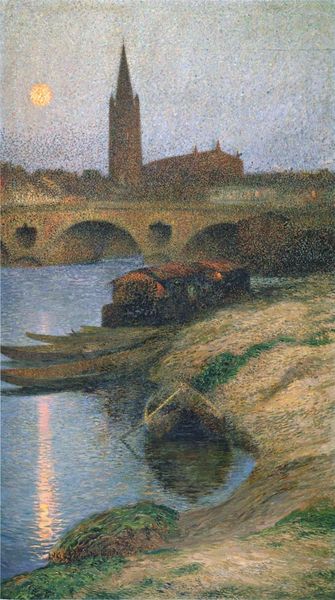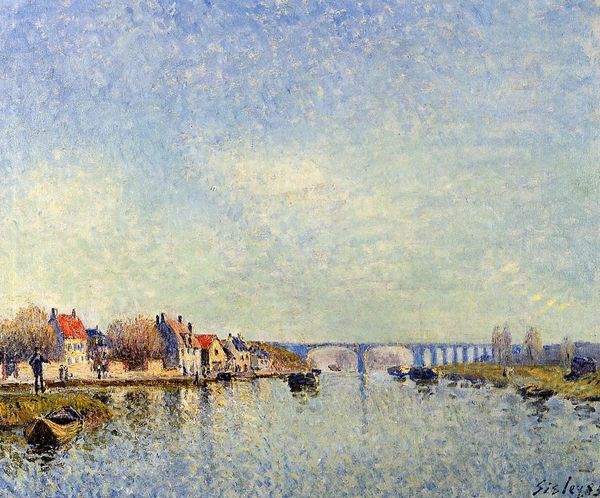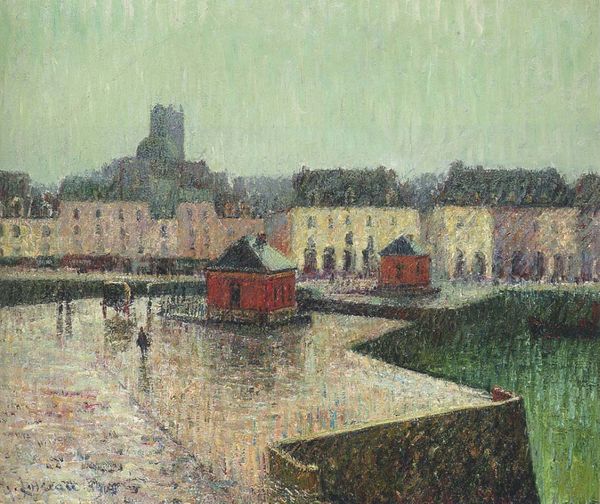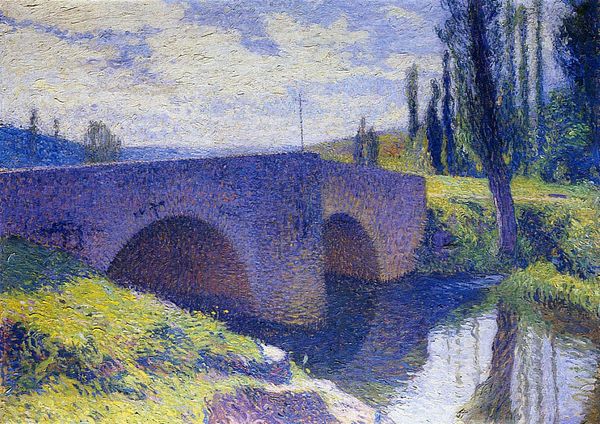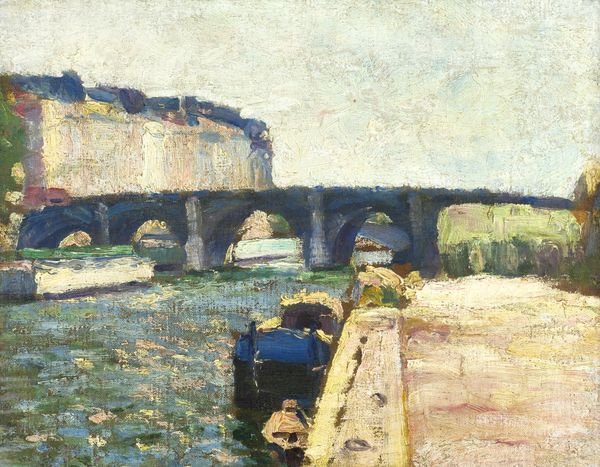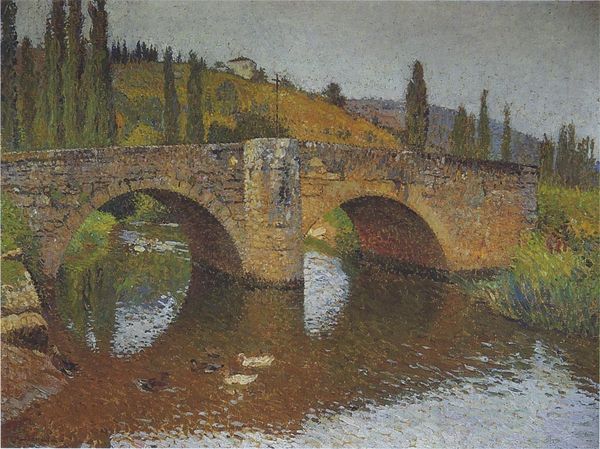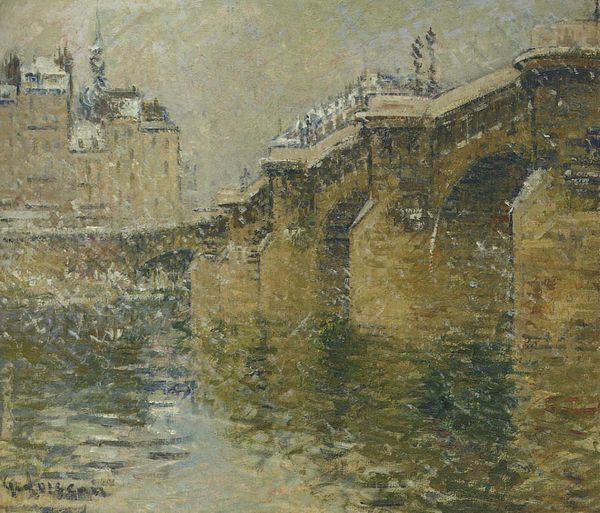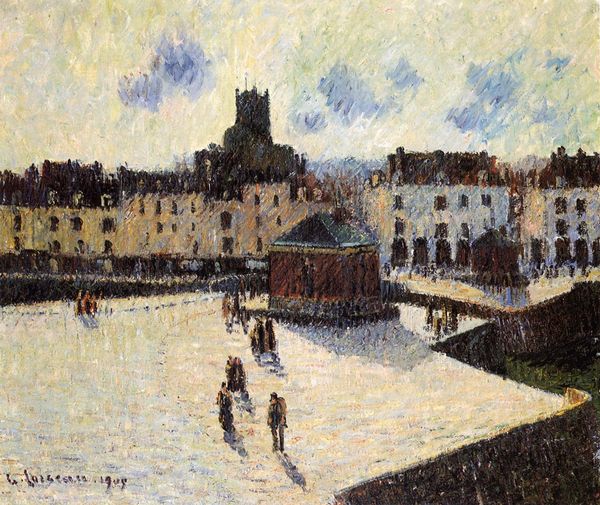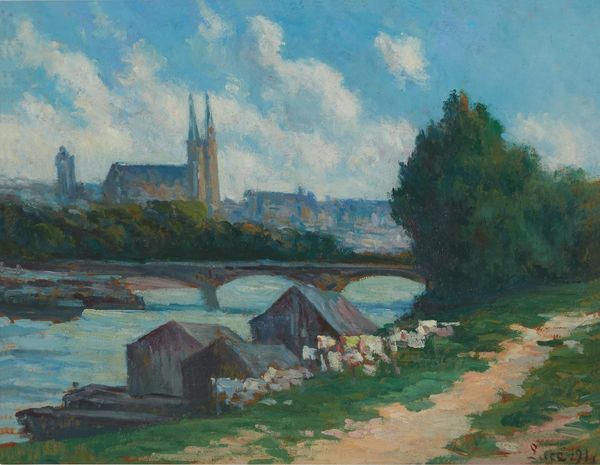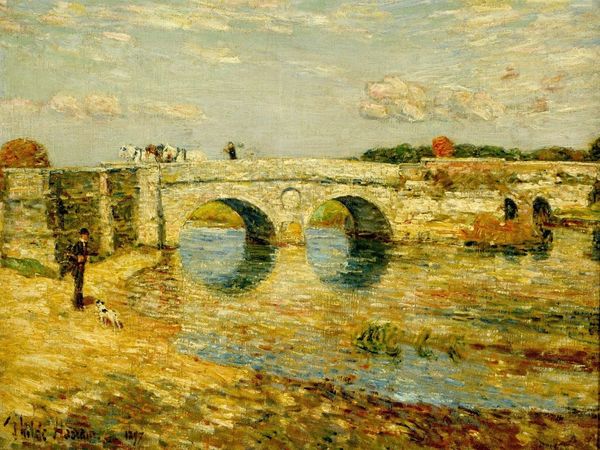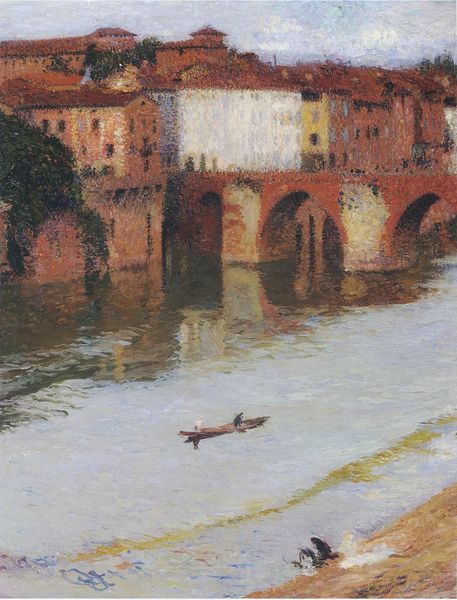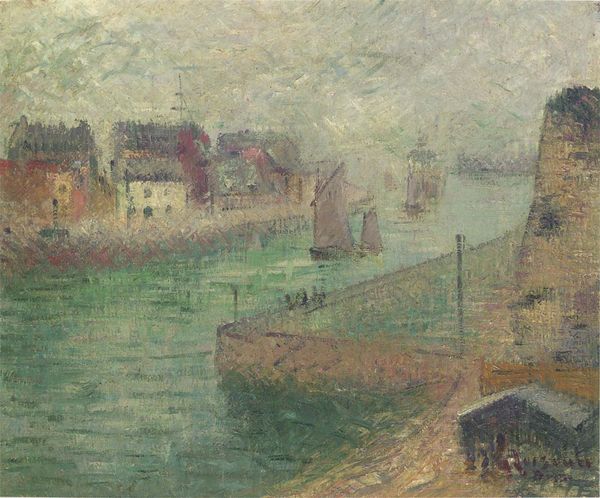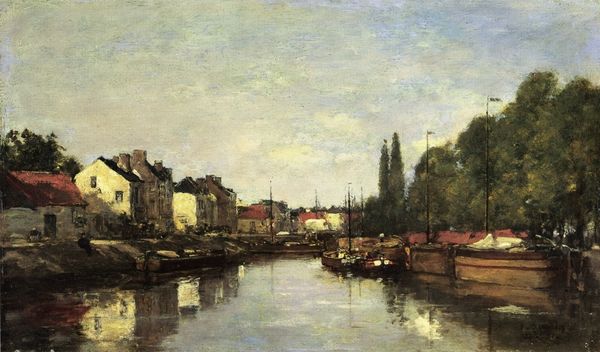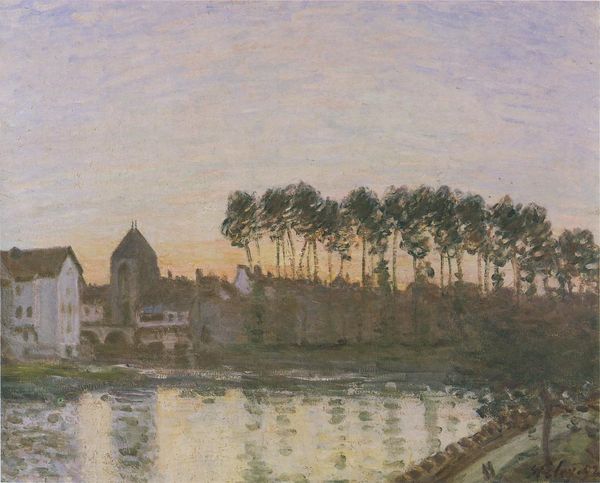
divisionism, painting, oil-paint
#
divisionism
#
night
#
boat
#
sky
#
painting
#
impressionism
#
impressionist painting style
#
oil-paint
#
landscape
#
river
#
impressionist landscape
#
oil painting
#
water
#
cityscape
#
post-impressionism
#
watercolor
#
building
Copyright: Public domain
Editor: This is "The New Bridge and Dalbade" by Henri Martin, an oil painting rendered in a Divisionist style. There's a dreamlike quality to it; it feels so still and quiet. What do you make of it? Curator: Well, I see an interesting focus on the labor inherent in creating this image. Notice how Martin's divisionist technique – applying individual dots of color – isn't just about optical mixing. It speaks to a painstaking, almost industrial process. Consider the sheer time and physical effort involved. How does that influence your interpretation? Editor: I guess I hadn’t thought of it as industrial, but I see what you mean. The repetitive application of paint feels like a form of artistic labor. So, are you saying the painting's meaning lies partly in its making? Curator: Precisely! And beyond the artist’s hand, think about the materials themselves. Where did this pigment come from? What kind of labor was involved in its production and distribution? Oil paint wasn't always easily accessible. Its presence here signifies a complex web of material exchange. Also, what about the bridge represented here? Does this facilitate access to particular resources, and how are those represented through paint? Editor: That's fascinating. So, even something that appears straightforward, like the river scene, can point to larger social and economic systems at play? Curator: Exactly. It challenges this notion of the artist as isolated genius, and the art object as separate from broader social processes. This is not merely a landscape, but the trace of labor. Do you agree it pushes Impressionism to incorporate labor? Editor: I definitely agree. Looking at it that way gives me a new appreciation for all the decisions – and labor – that went into creating it. Curator: Indeed. We've gone from merely looking *at* the piece to thinking *through* the material conditions of its making and circulation.
Comments
No comments
Be the first to comment and join the conversation on the ultimate creative platform.
